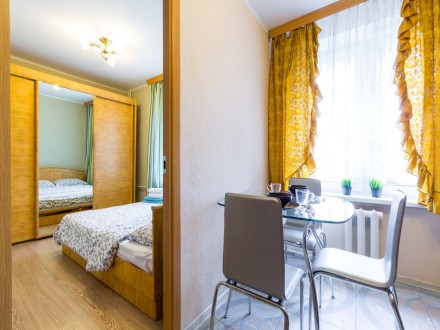Ring line of the Moscow metro: from creation to the present day
The ring line is the heart of the Moscow metro. It connects the radial stations of all lines, except for the Butovskaya line of the light metro and Kakhovskaya. How was the Ring created, is there a legend associated with its construction and what does this line represent today?
Time of occurrence
Before the Great Patriotic War, there were no questions about combining lines and stations into a single ring. After the victory, it became clear that the radial lines must be unloaded. The first stage of the Koltsevaya station was opened in 1950. It covered the area from the Kursk railway station to the Crimean Square. The second line was opened two years later. It took place outside the Garden Ring and united not only the central stations - Prospekt Mira and Novoslobodskaya, but also four stations - Yaroslavsky, Kazan, Leningradsky and Belorussky with the metro. The last section of the Koltsevaya line of the Moscow metro was opened in 1954. He locked the ring, passing through the Red Presnya to the Kiev station.
The appearance of the Koltsevaya line of the Moscow metro, like any other large object, has its own legend. It is believed that during the discussion and approval of the metro scheme, Stalin drank coffee and put the mug in the center of the plan. It was at this moment that the leader realized the need to build a discharge line.
History of
Thanks to the creation of the Ring, there was not only the ability to make convenient transplants from one radial line to another. The new line connected major transportation hubs, providing a transit highway for guests of the capital. The exceptions were Savelovsky and Rizhsky railway station. The plans of the Ministry of Urban Construction of the USSR included their inclusion in the ring line. But the project has been amended to eliminate this possibility.
Each station of the Koltsevaya Line of the Moscow Metro is classified as a deep foundation. Such a design is closely related to the echoes of the Great Patriotic War and the possible need to use the stations as bomb shelters.
Distinctive features
The design of the Ring line was developed in the postwar period. That is why most of the stations are devoted to the historical glory of Soviet soldiers, domestic weapons, the exploits of fraternal peoples and are described in separate, especially remarkable episodes of the Great Patriotic War.
In 1955, already after most of the stations of the Koltsevaya Line were opened, a decree was issued calling for combating architectural excesses. Most radial lines built later were designed much simpler and more austere.
Ring line today
The ring line on the Moscow metro scheme is marked in brown and number 5. At all its stations, passengers enter and exit on the left side relative to the train. Since 2016, the names of stations on Koltsevaya are announced not only in Russian, but also in English.








